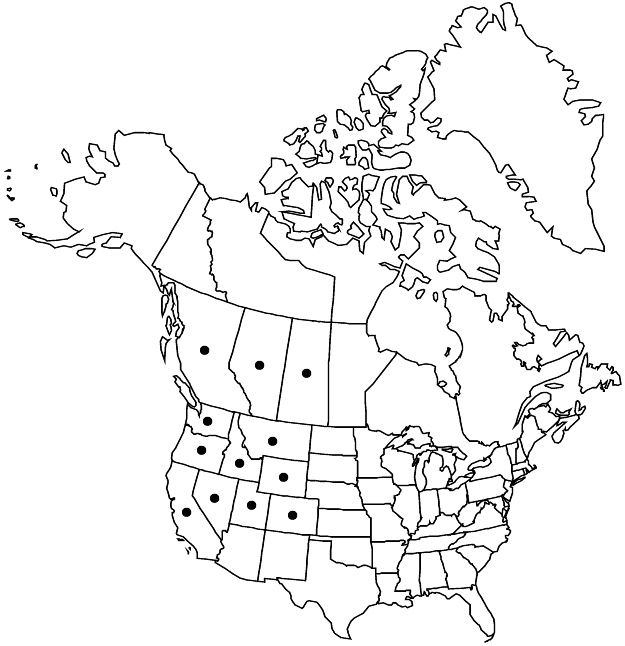familyRosaceae
subfamilyRosaceae subfam. Rosoideae
genusGeum
speciesGeum triflorum
varietyGeum triflorum var. ciliatum
Geum triflorum var. ciliatum
Rhodora 30: 207. 1928.
Endemic
Basionym: Geum ciliatum Pursh Fl. Amer. Sept. 1: 352. 1813
Synonyms: G. canescens (Greene) Munz G. triflorum var. campanulatum (Greene) C. L. Hitchcock G. triflorum var. canescens (Greene) Kartesz & Gandhi Sieversia campanulata (Pursh) G. Don S. canescens S. ciliata
Revision as of 00:33, 28 May 2020 by imported>Volume Importer
Basal leaves: larger leaflets cleft more than 1/2 their lengths. Inflorescences (1–)3–5(–7)-flowered. Fruiting styles: proximal segment persistent, 15–40 mm, pilose, distal segment tardily deciduous, 3–7 mm, apex not or ± hooked, glabrous or pilose on base. 2n = 42.
Phenology: Flowering late spring–early summer.
Habitat: Mountain meadows, grassy and rocky slopes, open coniferous and aspen woodlands, sagebrush scrub
Elevation: 60–3300 m
Distribution

Alta., B.C., Sask., Calif., Colo., Idaho, Mont., Nev., Oreg., Utah, Wash., Wyo.
Discussion
Selected References
None.
Lower Taxa
None.